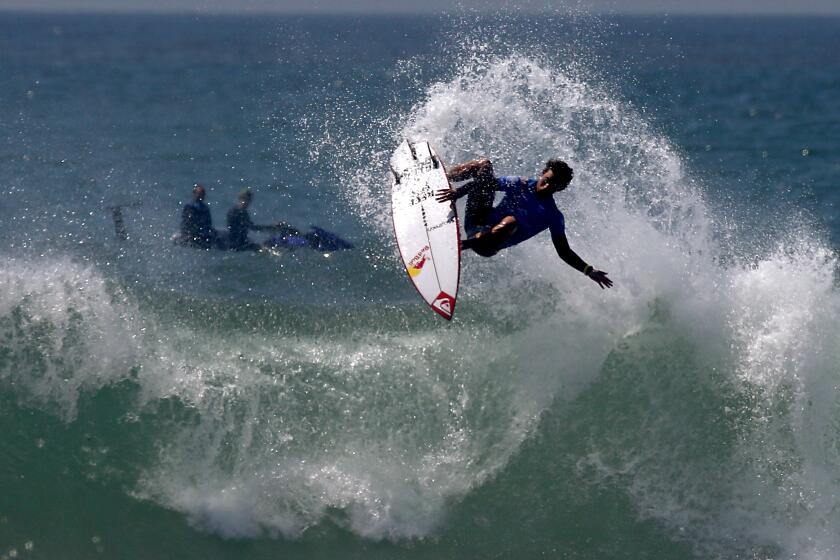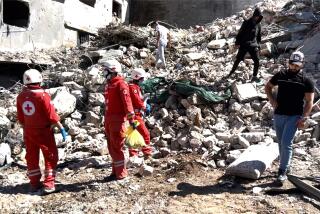Moroccans sleep in streets for third night as rescuers seek survivors of deadly quake
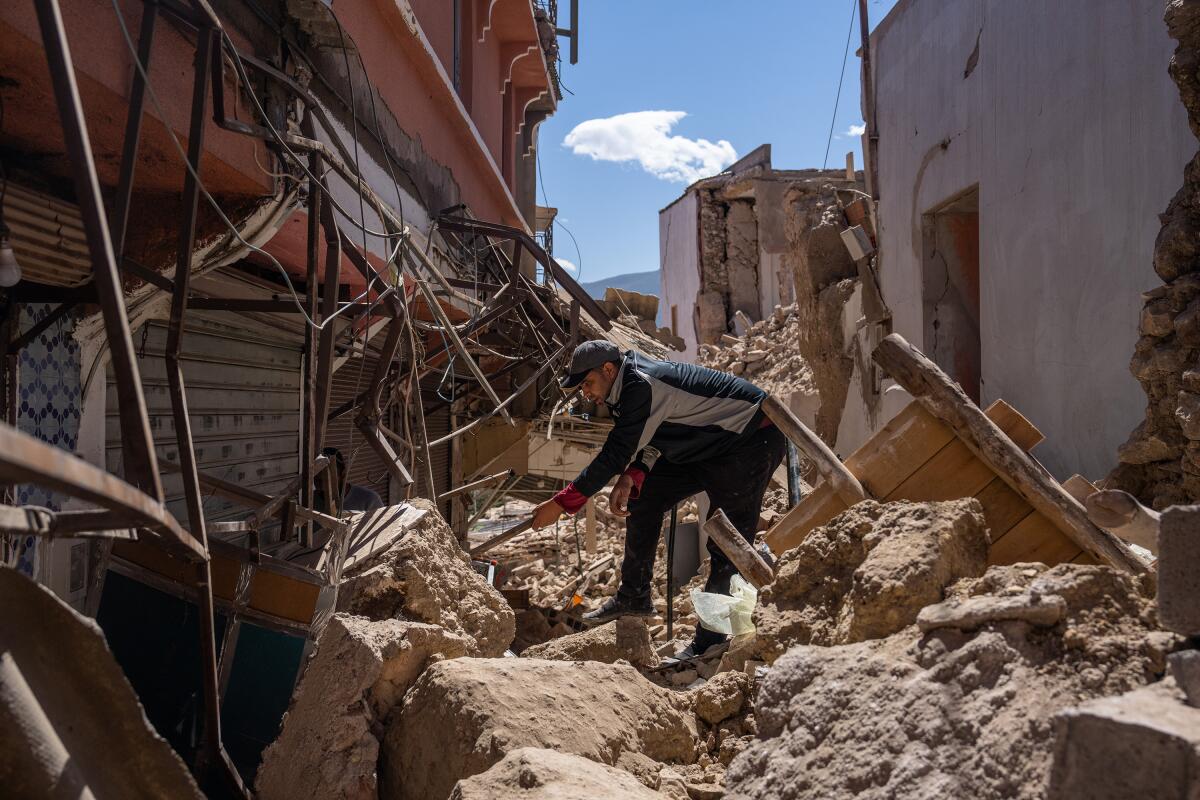
- Share via
AMIZMIZ, Morocco — People slept in the streets of Marrakech for a third straight night as soldiers and international aid teams in trucks and helicopters began to fan across remote mountain towns hit hardest by a historic earthquake.
The disaster left more than 2,100 people dead — a number that is expected to rise — and the United Nations estimated that 300,000 more people were affected by Friday night’s magnitude 6.8 quake.
Amid offers from several countries, including the United States and France, Moroccan officials said Sunday that they were accepting international aid from just four countries: Spain, Qatar, Britain and the United Arab Emirates.
“The Moroccan authorities have carefully assessed the needs on the ground, bearing in mind that a lack of coordination in such cases would be counterproductive,” the Interior Ministry said in a statement.
While some foreign search-and-rescue teams arrived Sunday as an aftershock further unnerved Moroccans already in mourning, other aid groups poised to deploy grew frustrated waiting for the government to officially request assistance.
“We know there is a great urgency to save people and dig under the remains of buildings,” said Arnaud Fraisse, founder of Rescuers Without Borders, who had a team stuck in Paris waiting for the green light. “There are people dying under the rubble, and we cannot do anything to save them.”
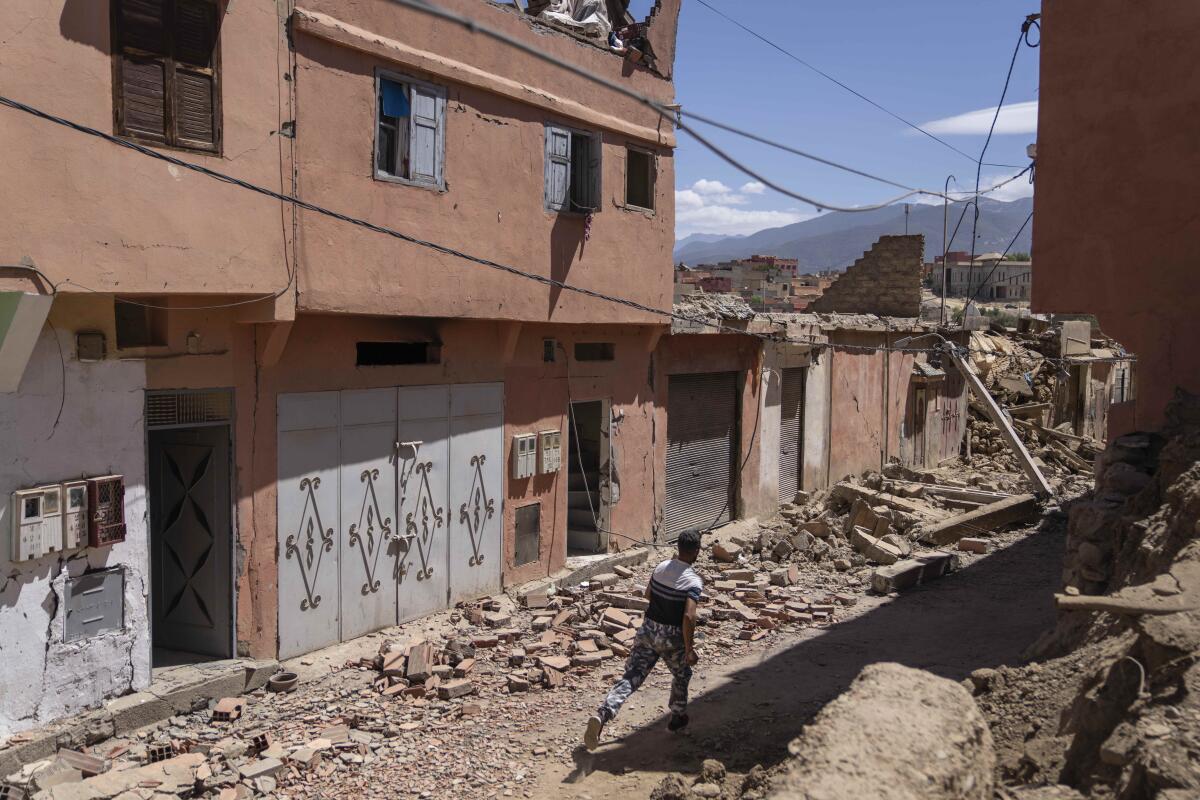
Help was slow to arrive in Amizmiz, where a whole chunk of the town of orange and red sandstone brick homes carved into a mountainside appeared to be missing. A mosque’s minaret had collapsed.
“It’s a catastrophe,’’ said villager Salah Ancheu, 28. “We don’t know what the future is. The aid remains insufficient.”
The National Weather Service issued a high surf advisory for large swaths of the coast and nearby islands through Monday evening.
Residents cleared rubble from the main unpaved road leading into town, and people cheered when trucks full of soldiers arrived. But they pleaded for more help.
“There aren’t ambulances, there aren’t police, at least for right now,” Ancheu said.
Those left homeless — or fearing more aftershocks — slept outside Saturday, in the streets of the ancient city of Marrakech or under makeshift canopies in Atlas Mountain towns such as Moulay Brahim, among the hardest hit. The worst destruction was in small, rural communities that are hard for rescuers to reach because the roads that snake up the mountainous terrain were covered by fallen rocks.
Those areas were shaken anew Sunday by a magnitude 3.9 aftershock, according to the U.S. Geological Survey. It wasn’t immediately clear whether it caused more damage or casualties, but it was probably strong enough to rattle nerves in areas where buildings have become unstable and residents feared aftershocks.
In a region where many build bricks out of mud, Friday’s earthquake toppled buildings not strong enough to withstand such a temblor, trapping people in the rubble and sending others fleeing in terror. A total of 2,122 people were confirmed dead and at least 2,421 others were injured — 1,404 of them critically, the Interior Ministry reported.
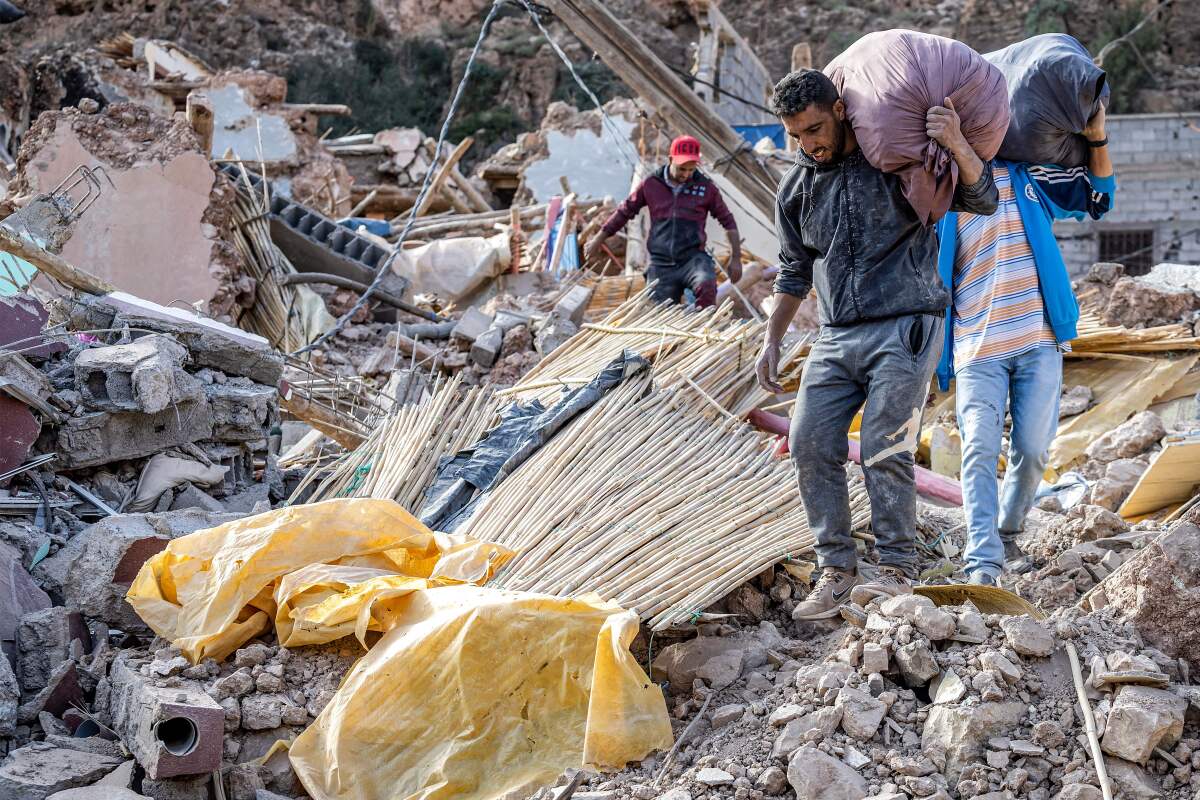
Most of the dead — 1,351 — were in Al Haouz district in the High Atlas Mountains, the ministry said.
Flags were lowered across Morocco, as King Mohammed VI ordered three days of national mourning starting Sunday. The army mobilized specialized search-and-rescue teams, and the king ordered water, food rations and shelters to be provided to those who lost their homes.
He also called for mosques to hold prayers Sunday for the victims, many of whom were buried Saturday amid the frenzy of rescue work nearby.
Morocco, which said Sunday that it would accept aid from four countries, has not made an international appeal for help as Turkey did in the hours after a massive quake this year, according to aid groups.
Nonetheless, aid offers poured in from around the world and the U.N. said it had a team in Morocco coordinating international support. About 100 teams comprising 3,500 rescuers are registered with a U.N. platform and ready to deploy in Morocco when asked, Rescuers Without Borders said. Germany had a team of more than 50 rescuers waiting near Cologne-Bonn Airport but sent them home, news agency DPA reported.
A Spanish search-and-rescue team arrived in Marrakech and headed to rural Talat N’Yaaqoub, according to Spain’s Emergency Military Unit. Foreign Minister José Manuel Albares said in a radio interview that Moroccan authorities requested help.
In France, which has many ties to Morocco and said four of its citizens died in the quake, towns and cities have offered more than $2.1 million in aid. Popular performers are collecting donations.
The epicenter of Friday’s quake was near the town of Ighil in Al Haouz province, about 45 miles south of Marrakech. The region is known for scenic villages and valleys tucked in the High Atlas Mountains.
Devastation gripped each town along the High Atlas’ steep and winding switchbacks, with homes folding in on themselves and people crying as boys and helmet-clad police carried the dead through the streets.
”I was asleep when the earthquake struck. I could not escape because the roof fell on me. I was trapped. I was saved by my neighbors who cleared the rubble with their bare hands,” said Fatna Bechar in Moulay Brahim. “Now, I am living with them in their house because mine was completely destroyed.”
There was little time for mourning as survivors tried to salvage anything from damaged homes.
Khadija Fairouje’s face was puffy from crying as she joined relatives and neighbors hauling possessions down rock-strewn streets. She had lost her daughter and three grandsons ages 4 to 11 when their home collapsed while they were sleeping less than 48 hours earlier.
“Nothing’s left. Everything fell,” said her sister, Hafida Fairouje.
The Mohammed V Foundation for Solidarity was coordinating help for about 15,000 families in Al Haouz province, including food, medical aid, emergency housing and blankets, the state news agency MAP quoted the organization’s head, Youssef Rabouli, as saying after he visited the region.
Rescuers backed by soldiers and police searched for victims in collapsed homes in the remote town of Adassil, near the epicenter. Military vehicles brought in bulldozers and other equipment to clear roads of rocks that crumbled off mountainsides, the state news agency MAP reported. Ambulances took dozens of wounded from the village of Tikht, population 800, to Mohammed VI University Hospital in Marrakech.
In Marrakech, large chunks were missing from a crenelated roof, and warped metal, crumbled concrete and dust were all that remained of a building cordoned off by police.
Tourists and residents lined up to donate desperately needed blood. Jalila Guerina said she ran to help when she learned of the need because of her duty as a Moroccan citizen.
“I did not even think about it twice,” she told the Associated Press, “especially in the conditions where people are dying, especially at this moment when they are needing help, any help.”
In the market, stray cats clambered over piles of stones and wooden bars, but shoppers were scarce at stalls set up under umbrellas by food and souvenir vendors.
The quake had a preliminary magnitude of 6.8 when it hit at 11:11 p.m., lasting several seconds, the U.S. Geological Survey said. A magnitude 4.9 aftershock hit 19 minutes later, it said. The collision of the African and Eurasian tectonic plates occurred at a relatively shallow depth, which makes a quake more dangerous.
It was the strongest earthquake to hit the North African country in more than 120 years, according to the USGS, which has records dating to 1900, but it was not the deadliest. In 1960, a magnitude 5.8 quake struck near the Moroccan city of Agadir, killing at least 12,000. That quake prompted Morocco to change construction rules, but many buildings, especially rural homes, are not built to withstand such temblors.
In 2004, a magnitude 6.4 earthquake near the Mediterranean coastal city of Al Hoceima left more than 600 dead.
Friday’s quake was felt as far away as Portugal and Algeria, according to the Portuguese Institute for Sea and Atmosphere and Algeria’s Civil Defense agency.
More to Read
Sign up for Essential California
The most important California stories and recommendations in your inbox every morning.
You may occasionally receive promotional content from the Los Angeles Times.
